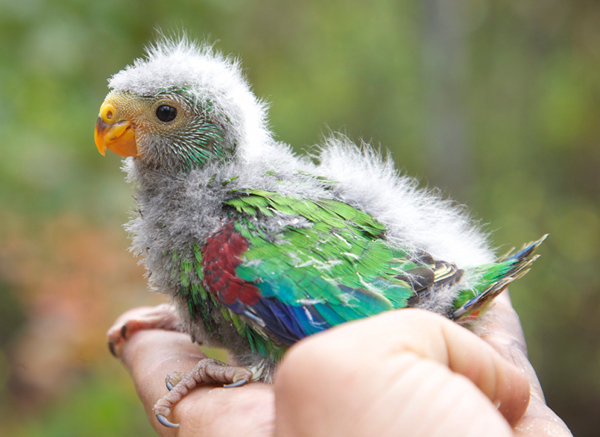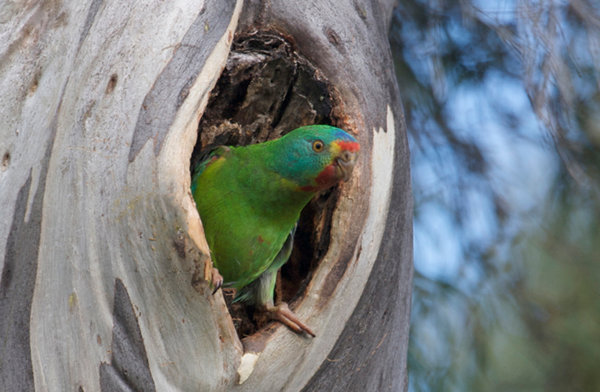International Migratory Bird Day 2013 occurs on the weekend of 11th and 12th of May, and to contribute to this important event the Loro Parque Fundación is supporting a project to help the world’s most migratory psittacine, the Swift Parrot (Lathamus discolor).
An adult Swift parrot on average weighs 75g, a little more than two typical-sized letters. Nevertheless, some individuals travel up to 5,000 kilometres between their breeding sites in Tasmania and their wintering grounds in mainland south-east Australia. Unfortunately the Swift Parrot is now an endangered species, with a total population of 1,500-4,000 individuals. Like so many other parrot species, the main threat to the Swift Parrot is habitat loss, fragmentation and alteration, which is taking place both within breeding and wintering habitats.

Dejan Stojanovic photograph.
To obtain essential information for the effective conservation of this endangered species, the project is researching its breeding biology and migratory behaviour. The project has several objectives, including to document the parrot’s biology and ecology in relation to land management practices, especially forestry. It is being carried out by Prof. Robert Heinsohn of the Fenner School of Environment and Society, Australian National University, and his team-members, Dr Debra Saunders and Dejan Stojanovic. In addition to the project being financially supported by the Loro Parque Fundación and the Australian Research Council, contributions to the project in various forms are coming from Sydney and Charles Sturt Universities, CSIRO Ecosystems Sciences, Bush Heritage Australia, the Tasmanian Department of Primary Industry, Waters and Environment, the Royal Zoological Society of South Australia, Inc, and the Forest Practices Authority.

Dejan Stojanovic photograph.
The researchers have found that all Swift Parrot nests are located in tree-cavities with very specific characteristics, and that they are very vulnerable to an arboreal mammal that was introduced to Tasmania. A later important phase of the project will be to track the parrots remotely over long distances to discover how they locate food sources and other resources. The tracking will use highly innovative technology, never before used in this way.










